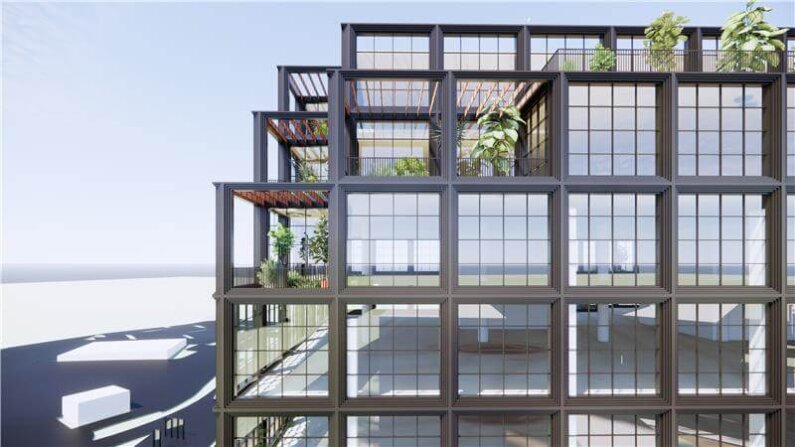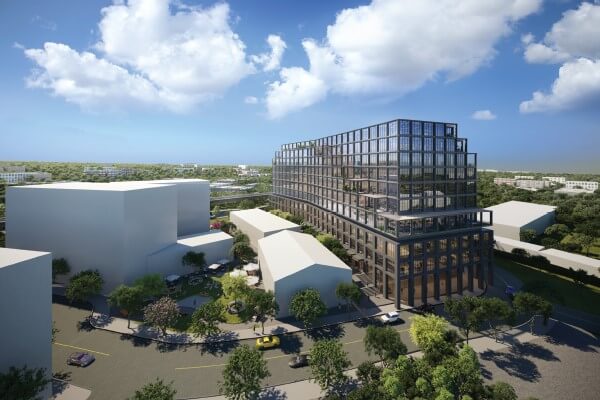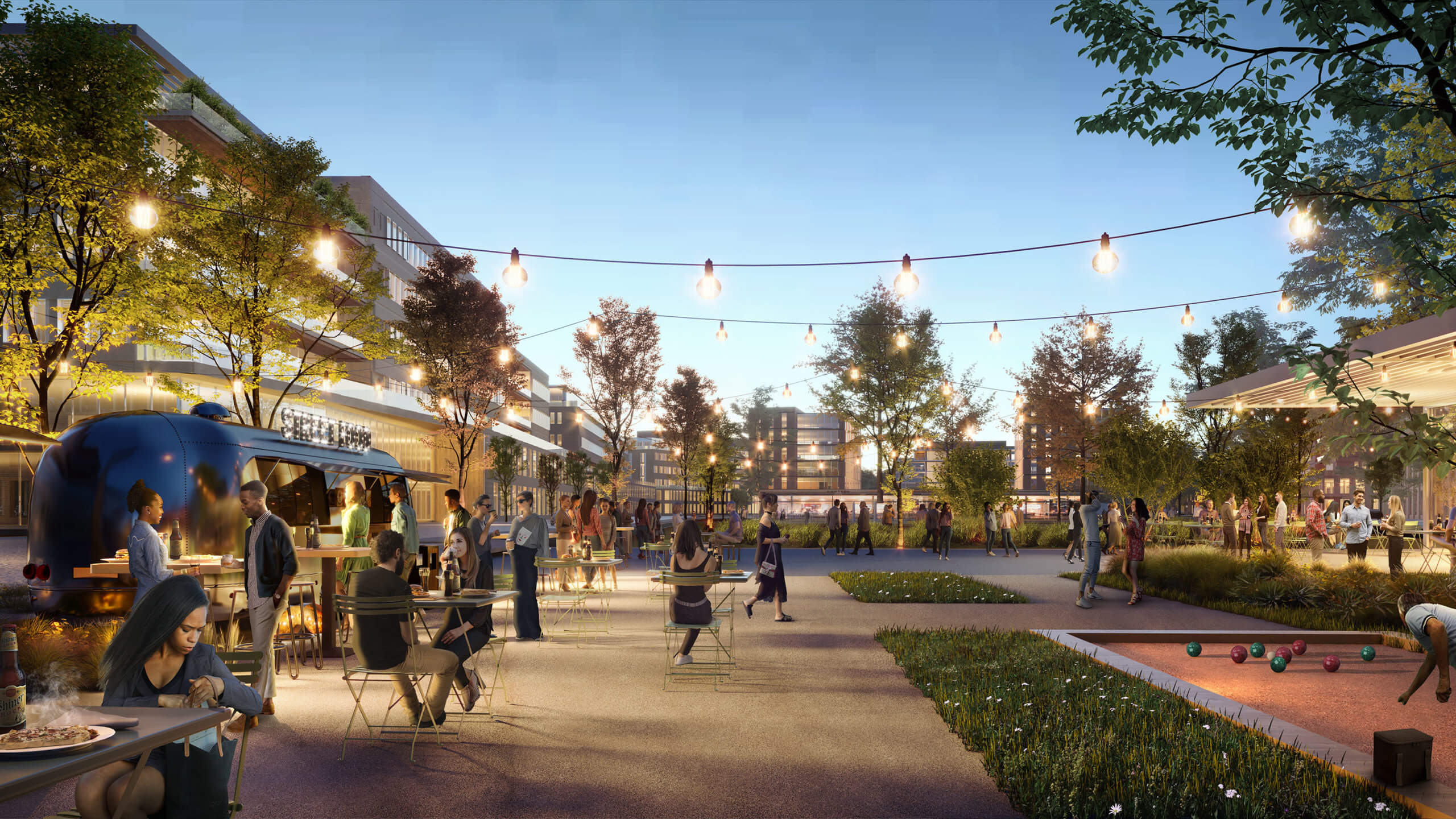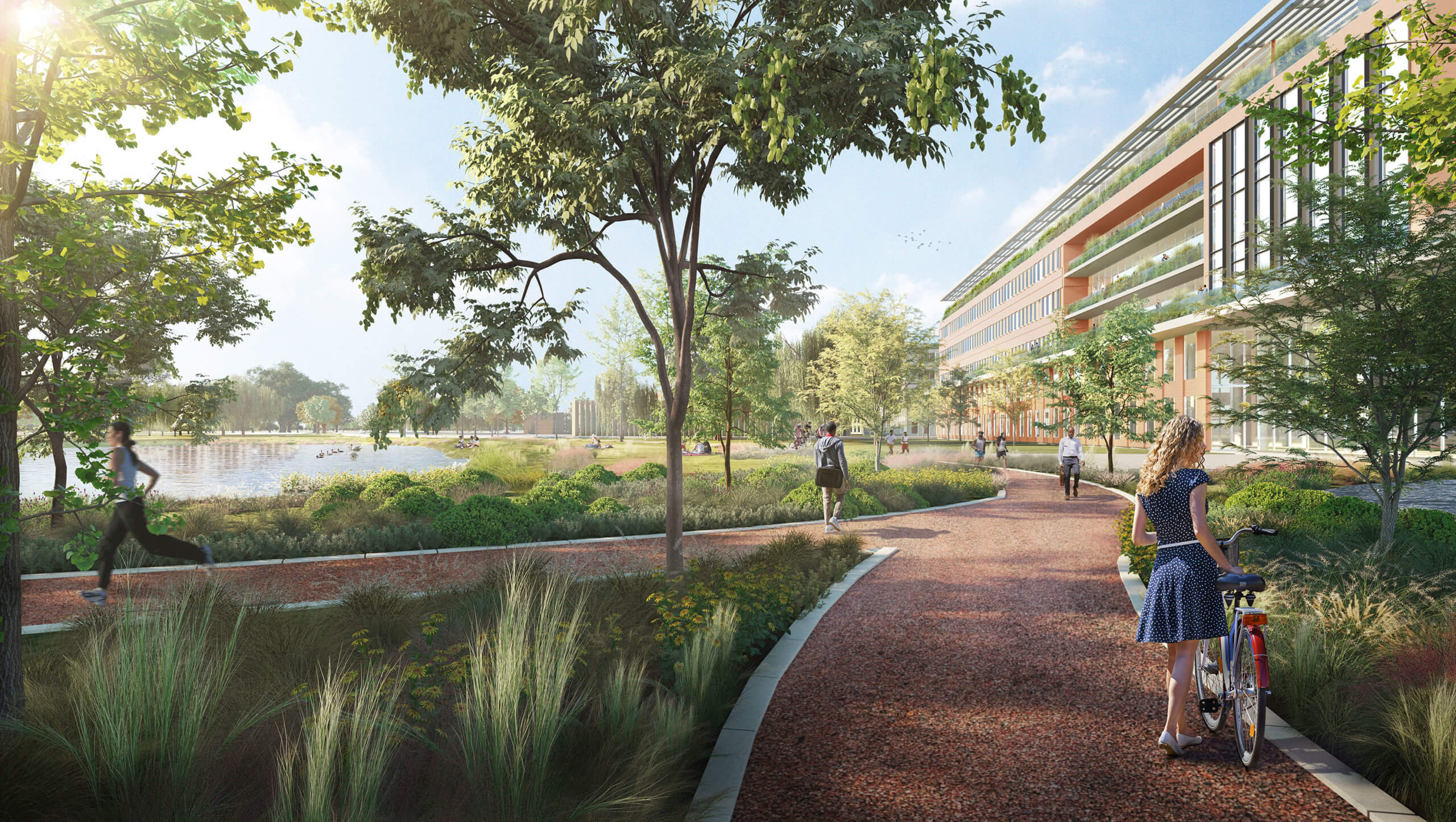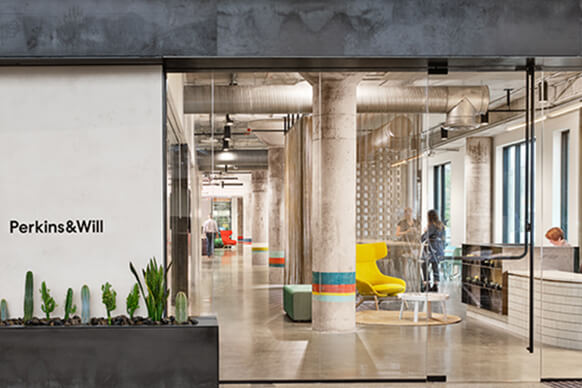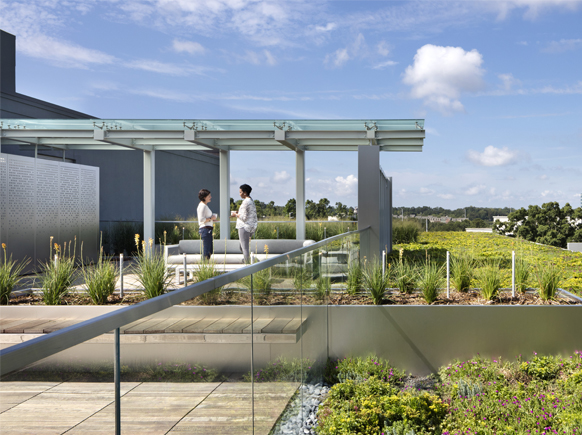In a pre-COVID world, outdoor space was an attractive and desired amenity in the workplace but not a necessity. We would see these outdoor spaces take shape through small balconies and terraces in high-rise buildings or even on top of parking garage structures. As many return to the office while the country still fights the pandemic, outdoor spaces are no longer a bonus — they are essential. With health and wellness top of mind, company leadership and building owners and facility management must implement ways to keep employees and occupants safe while staying relevant within the competitive real estate market.
Outdoor space and its flexibility will make employees feel more comfortable about coming back to the office and help teams meet and brainstorm in person in a safe manner. For example, my workplace — Perkins&Will’s Austin studio — is a perfect reflection of this because we rely on our outdoor spaces more. The Austin studio is located on the ground floor and gives employees access to a paseo. Before the pandemic, employees only used this outdoor space periodically. Once quarantine was lifted, it quickly became the most sought-after space for employees to work together as it was one of the few safe places where we could meet and re-engage with clients and teams during the past year.


